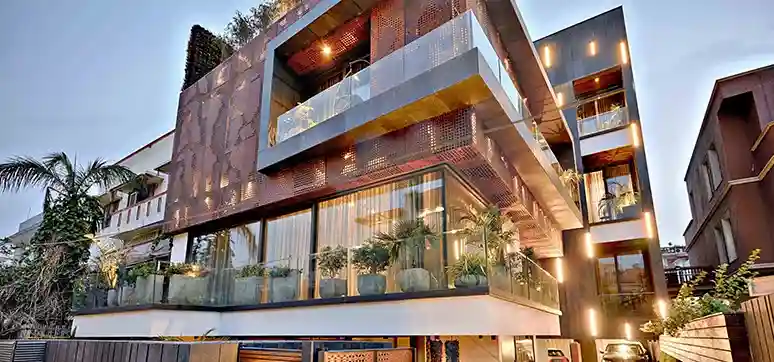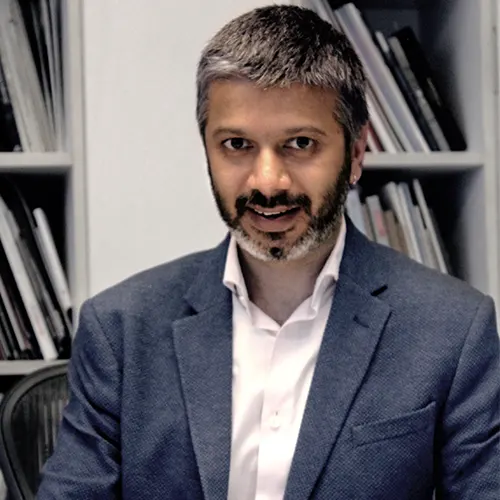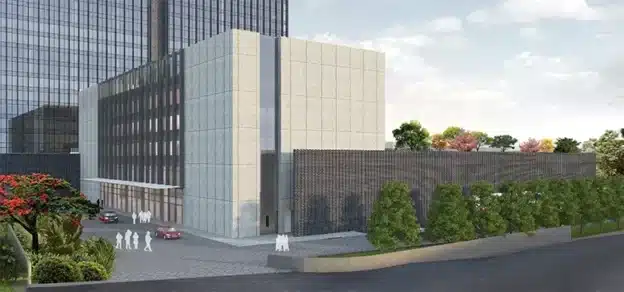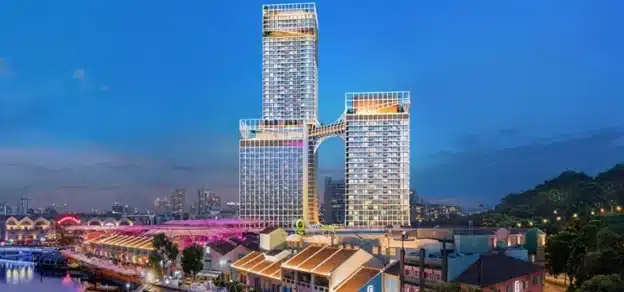In the contemporary world, a city is nothing but a culmination of multiple clusters of built entities. These built entities have ‘forms’, the exterior. The exterior/façade of the building is responsible for drawings people’s attention towards it, but it also serves a bigger purpose. The façade design of a building reveals a lot about the interior spaces.
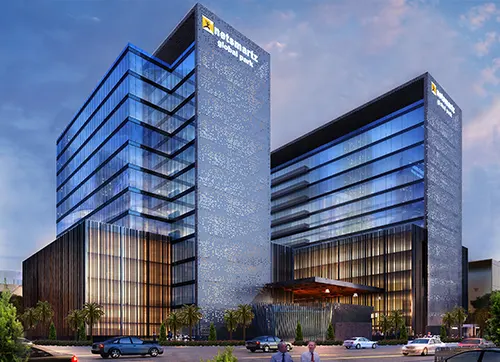
It highlights the structure’s style, geographical region, materials used, and construction, as well as the period during which it was created. Other than highlighting the structure’s elevation of façade health and regulating or monitoring the interior structure of a building as architects of today it is imperative to design a façade that is sustainable, resistant to climate, has thermal and acoustics insulation, and few others.
“Façades were once used to display opulence and dignity reflected through beautiful exteriors. Conversely, when modernism approached the decoration was phased out in preference for contemporary architecture principles, and materials were completely explored as a means of expressing identity,” says Ar. Sumit Dhawan.
In regards to the environmental factors, façade design is considered an important design factor that can manipulate the indoors. Taking into consideration that in hot or humid climate concrete building structure generally generates a lot of heat whereas mud and brick as building materials would be advantageous because of their cooling capabilities.

Pitched roofs are also prevalent in rainy and snowy areas, while double-insulated outside walls are common in cold areas. Contextually speaking, indigenously obtained materials are being combined with modern materials, resulting in revolutionary aesthetics and design approaches.
Cityspace’ 82 Architects believes screen façades are becoming extremely prevalent in contemporary buildings, as light and shadow play a fundamental role. Screens provide shielding and sun protection while also adjusting the light all through the day. They work well with diverse designs and can be combined with different materials to create unique aesthetics. For instance, perforated metal façades that are typically made from steel or aluminium are a perfect cladding choice, as they offer distinct aesthetics, along with the benefits of sustainability. Because of their ability to manage heat and airflow, these façades reduce a building’s energy costs and consumption.
Sun breakers are a design element that is frequently overlooked by many designers. It’s an important concept for the environment that India experiences, and if used strategically in today’s modern construction, it’s quite effective at deflecting strong sunlight and keeping the indoors cool. Along with evolution, wooden louvres or textile products are being used to create attractive façades, which are paired with durable elements like concrete or steel. Designers can also experiment with angular façades, which can enlarge the interiors and emerge in a diverse array of forms and aesthetics.

Innovative materials are being developed to give structures a rustic but spectacular appearance. A good example is weathering steel. It doesn’t need to be painted, and when exposed to the elements, it creates a simple yet rusty appearance that contributes to its timelessness. This allows for a gradual material transition.
Façades are also known as the building’s skin because they allow the structure to breathe in response to its surroundings, connotation, and orientation. They can be built in a variety of materials, including wood, metal, and even fabrics, to provide a unique screening for the building. Another important key factor of modern perspectives is green design, which is becoming more widespread in buildings.
Solar panels, rainwater harvesting, and vertical gardening are being used to create buildings that have a zero-carbon impact and are self-sustaining. Solar shingle roofs can be used in conjunction with standard roofing tiles, owing to their durability. It is a sustainable and innovative choice as it serves as solar panels that generate renewable energy for the building. These solar units can be linked together into the electrical system after installation and contribute to the energy needs of the home.
On the other hand, greenery integrated into the façade is not only aesthetically pleasing, but they also keep the interiors temperate and assist in lowering total energy consumption. Though glass facades are conventional in most contemporary designs, there are innovations with different hues and compositions of glass as well as other materials. Smart glass is a modern and trending material that enables us to actively control daylight and solar heat, improving user comfort and leading to energy efficiency in interiors. It can also filter out harmful UV radiation. In addition, transparent or translucent frame façades can be explored in a myriad of contexts.
Finally, façades are largely symbolic of a region’s unique culture and social circumstances throughout the world. Some, on the other hand, convey worldwide idioms; they are global in scope and originate for the benefit of architecture.
